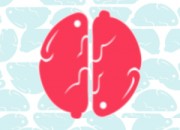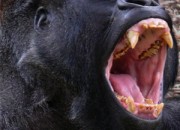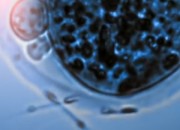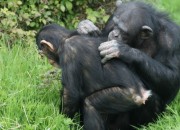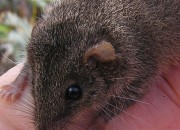Meet Throb, your new go-to resource for everything that’s science and sex, launched as a collaboration between the Gawker blogs io9 and Gizmodo. Among its posts you’ll discover juicy tidbits from a number of scientific disciplines as they apply to your tireless search for pleasure and romance. At the helm is Diane Kelly, a biologist you might remember from that infamous TED Talk about how erections work in mammals.
Science
In the modern rendering of the alpha male, the promise of access to territories, resources and protection for mating females is largely nonexistent — as is any notion of parental care investment. In this sense, the social aspects of “alpha” become conflated with those of dominance among species where females require only one thing from the male: his DNA.
In 2005, a protein was discovered on the surface of sperm thought to enable binding to the egg. Researchers named the protein Izumo, after the Izumo-taisha in Japan, a shrine dedicated to Okuninushi, the Shinto deity of marriage. The search was on to discover a counterpart protein on eggs. Last week, we found it — and it had been under our noses all along.
Nature defies our wildest imaginings, pushing the boundaries of what we know as possible. In some crocodilians, the female sex apparatus is so large, it is easy to confuse it with that of the male. In squid, the sperm travel into the female in a capsule that perforates the female body to deliver the sperm cells. Nature is a weird place and today, it got a little weirder. Meet the Neotrogla, a class of insects among which the female enters the male.
Carin Bondar, the scientist who brought us the web series Wild Sex — about the weird and kinky sex rituals in the animal kingdom — is working on a new show about the wondrous place where sex and biology collide. Called Sex Bytes, this new offering features fast, quirky little weekly videos centered on a specific topic, drawing on scientific literature.
“In one study, US psychologists investigated social grooming in humans by asking participants to indicate their closest emotional relationship and report behaviors such as running their fingers through the person’s hair, wiping away their tears, scratching their back and non-sexual massage,” Jason Goldman writes at the BBC. “They found levels of relationship satisfaction and trust were both positively correlated with self-reported grooming frequency among romantic partners.”
A study reveals that women are twice as likely to orgasm during sex with a partner than they are during casual sex. While its easy to chalk this up to stereotypes about women and their need for “emotional connection,” a variety of completely unrelated factors could be responsible for these results. Practice makes perfect is more obvious. But what about the impact of alcohol, or birth control on the body?
“La petite mort,” or “the little death,” is a timeless favorite for describing orgasm. Of course, there’s the little death and then there’s having sex until you disintegrate. For the antechinus, a tiny hedgehog-looking marsupial, reproduction isn’t simply a matter of life and death for its species — it’s death itself. Even as his body breaks down, this little animal will continue his sex binge, then die just a week short of its first year. But why?
On the eve of the millennium, the Bloodhound Gang released a song with an earworm of a chorus: “You and me baby ain’t nothin’ but mammals, so let’s do it like they do on the Discovery Channel.” The song reduced the often complex human courtship ritual into images of animals mounting one another freely and joyfully on the savanna. If you’re still holding on to the belief that other species have it easier, we can help.






